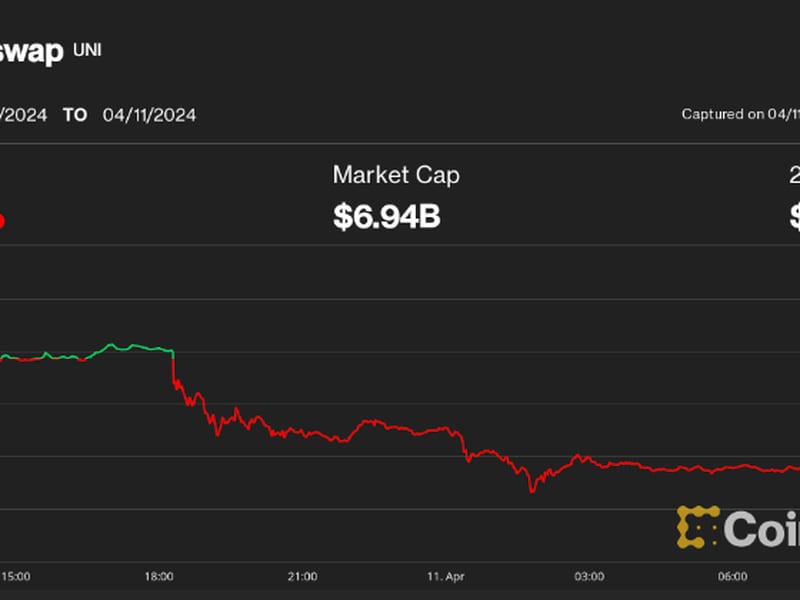Here Comes the Open Lending Era
Here Comes the Open Lending Era
In 2020 we finally saw some of the nearly decade-long blockchain hype fulfilled and the legitimate building blocks of a next-generation banking system emerge.
Open finance, and specifically open lending, has exploded to well over $10 billion this year. This growth has catalyzed a new source of funding for market participants ranging from individuals to corporates to hedge funds. It has also created a new source of liquid “digital yield” for investors, corporates and savers starving for an alternative to the perpetual 0% offered in legacy systems.
This post is part of CoinDesk’s 2020 Year in Review – a collection of op-eds, essays and interviews about the year in crypto and beyond. Alex McDougall is co-founder and chief investment officer of Bicameral Ventures.
The open lending landscape is formed by decentralized and centralized platforms that pool fiat assets and lend them out against collateral posted as digital assets.
A hallmark of this space is extreme flexibility to lend and borrow at any term, in any currency, at any size, with any level of direct collateral, for any period of time (even on a block by block basis). This ability to customize at low scale opens up an entire “yield-as-service” or capital-as-a-service industry of bespoke solutions tailored for anyone looking for yield or flexible borrowing.
There is one burning question: Is this real? In 2020, the entire digital asset market took a meaningful step forward in maturity. As part of this ongoing evolution, institutional grade financial infrastructure needs to be developed. In 2020, through an influx of capital and talent, open lending stepped up its game and grew from a fringe use case to a burgeoning engine powering the next phase of the digital economy.
The fundamentals
Think about an open lending platform as a super simple, super transparent bank. Banks take in deposits, keep a tiny amount on hand for liquidity and lend the rest out in a complicated and opaque quest to find a spread.
Banks will undertake all sorts of strategies in the great quest for yield including derivatives and esoteric combinations of loan products. Depositors generally don’t think too hard about what the bank is up to with their capital given their deposits are mostly insured by the FDIC. Banks themselves don’t think too hard about it either as governments have proven extremely willing to bail them out if they get the math and modelling wrong.
Open lending, on the other hand, is built from the fundamentals of blockchain: transparent, open and in real time. At their core, open lending platforms are performing similar functions in that they are taking in funds from lenders, retaining a certain amount for liquidity (usually closer to 20%) and lending the rest out.
The key differences between open lending and traditional banking lending products:
- Loans are generally collateralized between 100%-300% by liquid digital assets versus collateralized by illiquid or no assets at all.
- The net interest margin is mostly transparent and passed on to the actual lender versus kept as profits by the bank.
- The majority of transactions, balances and liquidity can be seen in real time on the blockchain versus reported months later on financial statement.
The comparison on its surface boils down to:
- Traditional Banks: 0% return, tiny liquidity reserves with limited transparency, poor governance fundamentals and very closely guarded underwriting practices but balances are insured.
- Open lending platforms: 8%-10% return, greater and transparent reserves, better governance fundamentals, simple underwriting practice founded on highly liquid collateral but balances are not insured.
Open lending may be relatively basic today, but at its best it offers the building blocks of an entirely re-shaped financial system built on transparent, liquid and open fundamentals.
Decentralized fundamentals
Within decentralized finance (DeFi) there are four key segments, open lending (~45% of the market), decentralized exchanges (~30%), derivatives (~10%) and the rest is miscellaneous. As is expected when you create platforms that are fully transparent, borderless and entirely automated, when you release them into the wild weird stuff happens, especially when these markets interact with each other.
Where there are no frictions and easily accessible short-term leverage, there is nowhere to hide bad code, bad logic or bad risk management. The majority of “hacks” that we’ve seen in the DeFi space have been, quite frankly, ingenious manipulations of this decentralized, automated logic to arbitrage gaps in either the internal logic of platforms or between rules of two or more automated platforms.
While this may sound intimidating, it is not meant to be. It means that suboptimal platforms fail almost immediately as hundreds of thousands of users try to poke and prod at their infrastructure for their own gain on a 24-hour cycle.
In 2020, the entire digital asset market took a meaningful step forward in maturity.
This is as compared to the “traditional” world where rules, regulations and frictions ensure safety, but also that often opportunities are only able to be exploited by those with the biggest accounts, fastest connection speeds or best relationships. This isn’t even touching the “too big to fail” problem where governments have frequently bailed out banks that have proven to be poor stewards of capital and by doing so removed the majority of market discipline.
This has a very profound implication: If an open-sourced, transparent and decentralized finance protocol has a meaningful wall-clock time, it is very likely “fair.”
Fair establishes excellent fundamentals, but it doesn’t mean perfect. In the open lending space there are meaningful gaps in what the technology can enable in a true purely automated fashion. Key among the limitations of decentralized open lending platforms are:
- Risk-based collateralization: In the DeFi world, your collateral is the platform’s underwriting. Anyone who shows up to Compound with $100 of ETH can borrow exactly $75 of USDC as calculated by the protocol, not a penny more or less. This is both wildly refreshing from an inclusion perspective but also inefficient and exclusive in its own way as it limits access to capital to only those who have collateral to post. There is enormous potential as we build tools that allow more discretion in autonomously underwriting specific borrower risks based on provable, on-chain risk factors.
- Across-chain and off-chain integrations: No decentralized platform can currently allow me to borrow fiat against BTC collateral. I can borrow a U.S. dollar stablecoin against an Ethereum wrapped version of BTC (or soon native BTC) as a proxy. But every wrapper or abstraction layer adds risk and complexity and is never as functional as the underlying asset. There again is enormous value in mixing and matching what assets function as collateral and what assets I can remove from the platform against that collateral.
- Direct posting of collateral: This is a nuanced point, but in on-chain lending pools lenders do not have a direct claim over any of the collateral posted by the borrowers. You have a claim to a certain amount of assets from within the pool but you are relying on the automated interest rate, margin call and liquidation mechanics to ensure that borrower risk is being managed and that there will be sufficient funds for you to withdraw when you need to. This is extremely efficient as all collateral is automatically rehypothecated (when deposit institutions re-lend or reuse customer collateral) and redeployed within the pools to fund loans and withdrawals leading to higher yields and lower borrow costs, but it is a very different paradigm than many institutional lenders are used to operating in.
Best of both?
Into this decentralized functionality gap step the centralized open lending players. At their best, these players are taking the “fair” best practices from decentralized platforms of transparency and algorithmic risk management and leveraging their centralized authority to fill in the limitations outlined above.
At their worst, though, centralized lending platforms can recreate the worst pieces of our existing financial infrastructure by creating opaque, over-risky, relationship-based, unauditable systems that cannot withstand the stress of a volatile market. There are illuminating examples of every flavor ranging from the reassuring (BlockFI and other platforms having zero losses despite a ~55% reduction in collateral value in March) to the unnerving (Cred’s murky bankruptcy proceedings in November).
The best in the business follow a few best practices:
- Algorithmic underwriting: All collateralization and underwriting methodologies should be as algorithmic and transparent as possible with clear data-driven risk ratings that do not have exceptions.
- Transparent rehypothecation: Rehypothecation is the act of utilizing assets that are pledged as collateral either for re-lending or to fund withdrawals. All rehypothecation practices should be transparent, traceable and rigidly enforced (ideally with the borrower receiving direct interest credit for their collateral like on decentralized platforms).
- Automated unhealthy loan procedures: Margin call and liquidation practices should be automated and without exceptions as digital assets never stop trading.
- Automatic pool sizing mechanics: Utilization rates (i.e. the amount of borrowed funds that are lent onwards, effectively the reserve ratio) should be transparent, targeted and adhered to and interest rates changed algorithmically to ensure that the pool to fund withdrawals stays sufficient (ideally with interest rate algorithm being disclosed publicly as on decentralized platforms like Compound).
- Transparent Pool Balances: Pool sizes should be visible on-chain and wallets should be disclosed to leading Block Explorers to allow real-time external auditing, although it is acknowledged that privacy of individual lenders and borrowers does need to be considered. Celsius’ recent partnership with Horizen to explore zero-knowledge proof of reserves is an evolution in this vein.
- Isolation of risk: Funds loaned into the pool should avoid being commingled with funds for other pieces of the business. Further, the terms and conditions or master loan agreement should specifically state that all lent funds will be used for pooled lending purposes.
Where do we stand?
There are several key factors that need to be understood to properly evaluate centralized platforms:
Rehypothecation is frequent and necessary
Given the high liquidity and high fungibility of the collateral posted, rehypothecation is somewhat more straightforward than in the more-bespoke, less-liquid collateral scenarios seen in traditional prime brokerage situations. Also given the extreme overcollateralization prevalent in the industry, rehypothecation is a critical piece of the business model and necessary to maximize returns, minimize borrow cost and maintain the “open term” liquidity of the platforms.
Collateral practices do vary by platform and by borrower
Most platforms have an institutional desk that will have a more flexible collateralization policy than the two to three times overcollateralization that is the industry standard. This is because the institutional desk is doing additional diligence and risk rating these borrowers. In a vacuum there is nothing wrong with this, but it does enhance the counterparty risk given it is additional, non-transparent discretion given to the platform operator and these practices need to be well understood.
Characterization of relationship is not consistent
The relationship between a “lender” and the centralized company running the lending pool can either be terms of service based more akin to a technology platform, or master loan agreement based and more akin to a traditional financial instrument. There are important distinctions between the two, and properly characterizing your relationship with the party governing the platform is critical to proper evaluation of risk.
There is fluctuating willingness to post collateral directly to a lender.
There is willingness by centralized platforms to post collateral from the pool directly in the name of the borrower in exchange for a reduction on yield. This yield spread is a function of what the collateral is and the opportunity cost of that asset within the platform and varies by platform. However, there are certain platforms that, as a rule, do not post collateral and maintain it exclusively within the pool. As a rule of thumb, it generally costs between 2%-6% to fully collateralize a stablecoin loan with BTC collateral.
Maturing market
In all, our takeaway from the open lending industry is that in 2020 it started growing up. There is a ton of work to do on transparency, messaging and optimizing risk controls, but there is legitimate business activity happening in this open lending space.
From trading, to hedging, to working capital, to treasury, tax and capital call management there are serious teams running serious operations, particularly at the institutional grade lending platforms. Decentralized platforms have shown the way and created “counterparty risk free” lending pools with total transparency, now it’s time for their centralized counterparts to leverage these fundamentals and continue picking up the slack to create the institutional grade money market industry and new generation banks we all need. To be clear, it’s happening, and rapidly.
The building blocks of the next generation of financial services are in view. With careful, thoughtful analysis of the right factors and with careful diversification across technology and counterparty, forward thinking investors and borrowers can meaningfully improve their bottom line and risk-adjusted returns without sacrificing liquidity in a way completely inaccessible to those not willing to lift up the hood and dig in.










